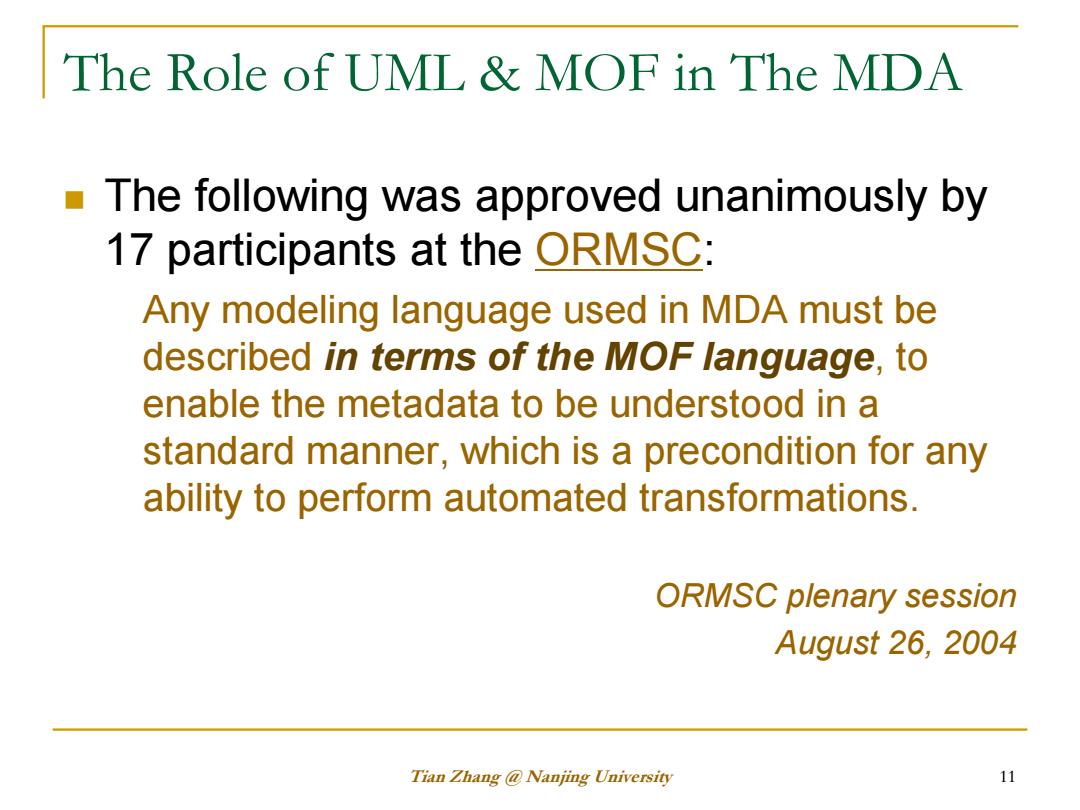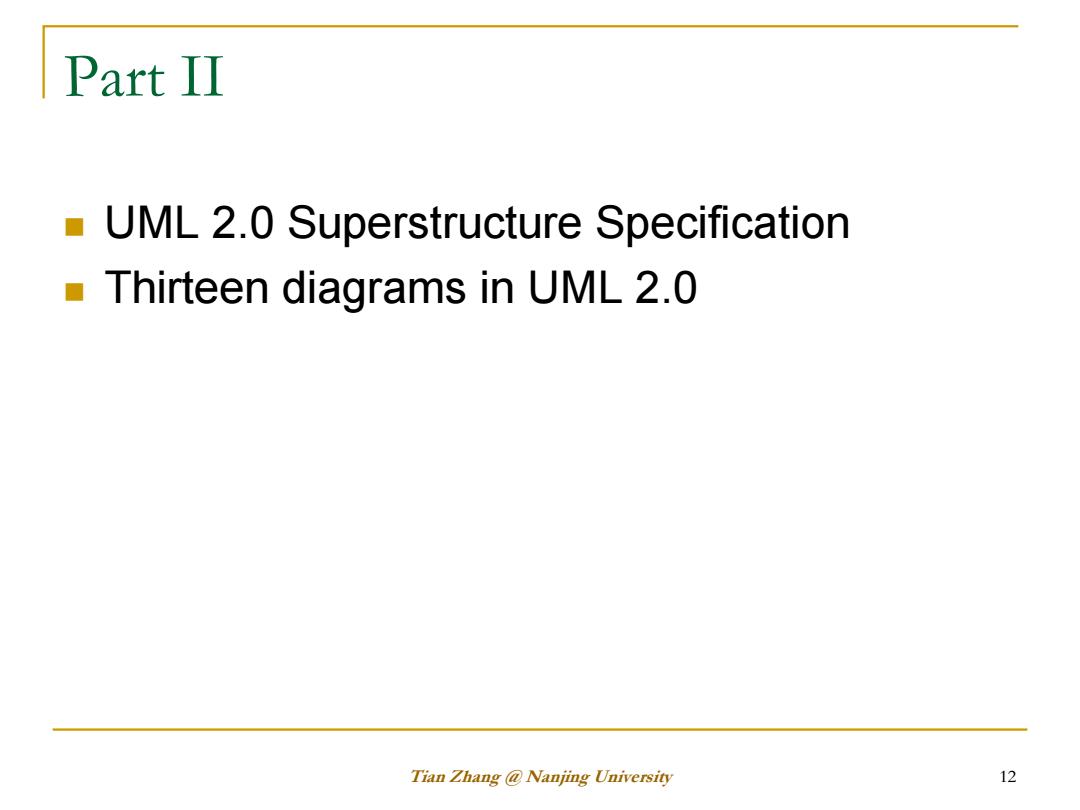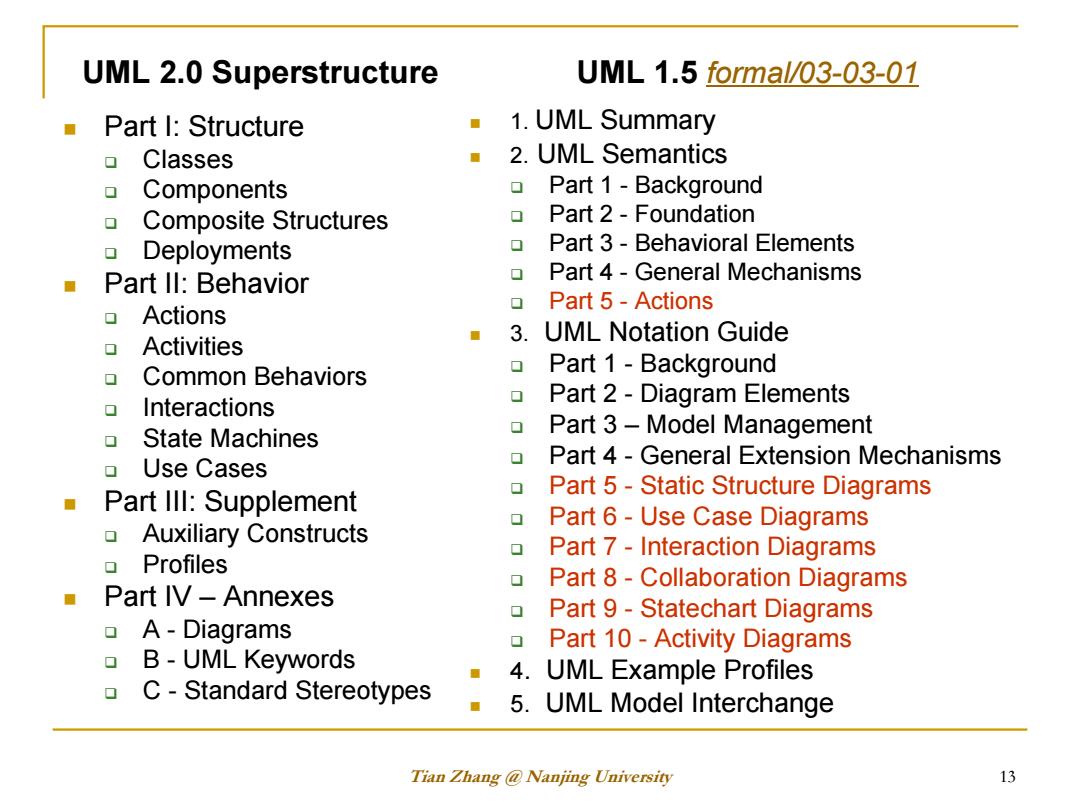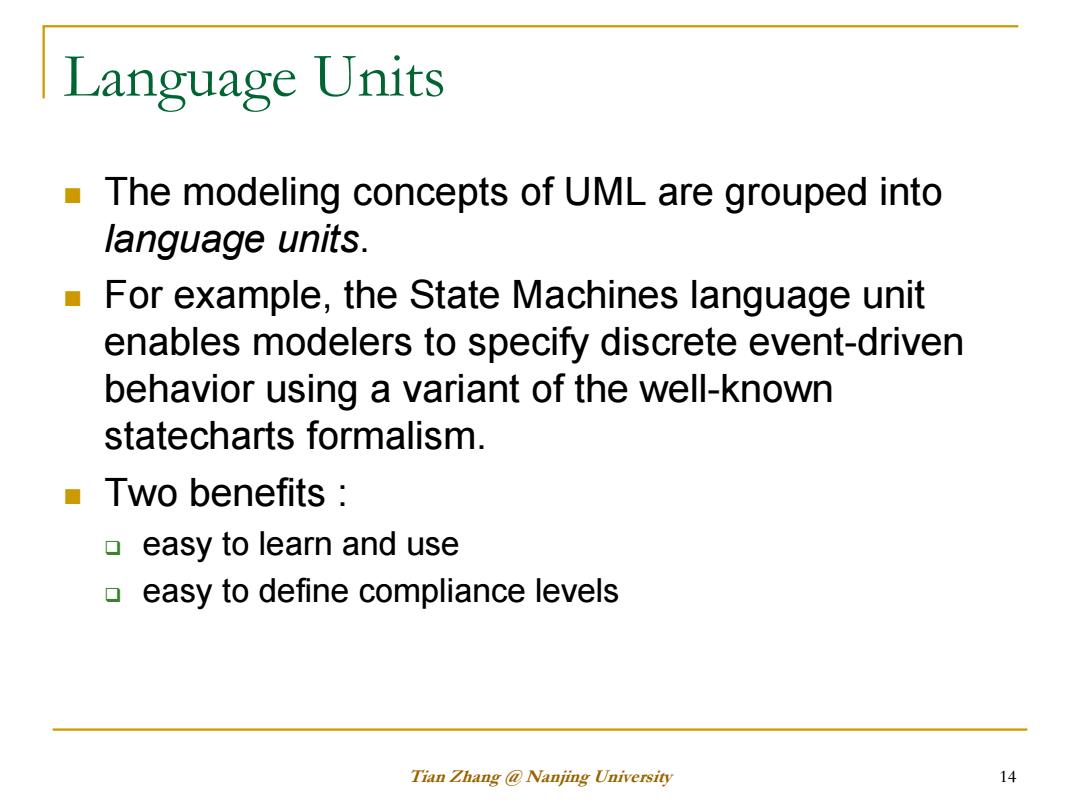
The Role of UML MOF in The MDA The following was approved unanimously by 17 participants at the ORMSC: Any modeling language used in MDA must be described in terms of the MOF language,to enable the metadata to be understood in a standard manner,which is a precondition for any ability to perform automated transformations. ORMSC plenary session August 26.2004 Tian Zhang Nanjing University 11
Tian Zhang @ Nanjing University 11 The Role of UML & MOF in The MDA The following was approved unanimously by 17 participants at the ORMSC: Any modeling language used in MDA must be described in terms of the MOF language, to enable the metadata to be understood in a standard manner, which is a precondition for any ability to perform automated transformations. ORMSC plenary session August 26, 2004

Part II UML 2.0 Superstructure Specification Thirteen diagrams in UML 2.0 Tian Zhang Nanjing University 12
Tian Zhang @ Nanjing University 12 Part II UML 2.0 Superstructure Specification Thirteen diagrams in UML 2.0

UML 2.0 Superstructure UML1.5 formal/03-03-01 Part I:Structure 1.UML Summary Classes 2.UML Semantics Components Part 1 -Background Composite Structures Part 2-Foundation Deployments Part 3-Behavioral Elements Part ll:Behavior Part 4-General Mechanisms Part 5-Actions Actions Activities 3.UML Notation Guide Common Behaviors Part 1-Background Interactions Part 2-Diagram Elements State Machines Part 3-Model Management Use Cases Part 4-General Extension Mechanisms ■ Part Ill:Supplement Part 5-Static Structure Diagrams Part 6-Use Case Diagrams Auxiliary Constructs Part 7-Interaction Diagrams Profiles Part 8-Collaboration Diagrams ■Part IV-Annexes Part 9-Statechart Diagrams ▣A-Diagrams Part 10-Activity Diagrams B-UML Keywords 4.UML Example Profiles C-Standard Stereotypes 5.UML Model Interchange Tian Zhang Nanjing University 13
Tian Zhang @ Nanjing University 13 UML 2.0 Superstructure Part I: Structure Classes Components Composite Structures Deployments Part II: Behavior Actions Activities Common Behaviors Interactions State Machines Use Cases Part III: Supplement Auxiliary Constructs Profiles Part IV – Annexes A - Diagrams B - UML Keywords C - Standard Stereotypes UML 1.5 formal/03-03-01 1. UML Summary 2. UML Semantics Part 1 - Background Part 2 - Foundation Part 3 - Behavioral Elements Part 4 - General Mechanisms Part 5 - Actions 3. UML Notation Guide Part 1 - Background Part 2 - Diagram Elements Part 3 – Model Management Part 4 - General Extension Mechanisms Part 5 - Static Structure Diagrams Part 6 - Use Case Diagrams Part 7 - Interaction Diagrams Part 8 - Collaboration Diagrams Part 9 - Statechart Diagrams Part 10 - Activity Diagrams 4. UML Example Profiles 5. UML Model Interchange

Language Units The modeling concepts of UML are grouped into language units. For example,the State Machines language unit enables modelers to specify discrete event-driven behavior using a variant of the well-known statecharts formalism. Two benefits ▣easy to learn and use easy to define compliance levels Tian Zhang Nanjing University 14
Tian Zhang @ Nanjing University 14 Language Units The modeling concepts of UML are grouped into language units. For example, the State Machines language unit enables modelers to specify discrete event-driven behavior using a variant of the well-known statecharts formalism. Two benefits : easy to learn and use easy to define compliance levels

Compliance Levels Level 0(LO)-This level is formally defined in the UML Infrastructure. Leve/1(L1)-It adds language units for use cases, interactions,structures,actions,and activities. ■ Leve/2(L2)-It adds language units for deployment,state machine modeling,and profiles. Leve/3 (L3)-This level represents the complete UML. Tian Zhang Nanjing University 15
Tian Zhang @ Nanjing University 15 Compliance Levels Level 0 (L0) - This level is formally defined in the UML Infrastructure. Level 1 (L1) - It adds language units for use cases, interactions, structures, actions, and activities. Level 2 (L2) - It adds language units for deployment, state machine modeling, and profiles. Level 3 (L3) - This level represents the complete UML